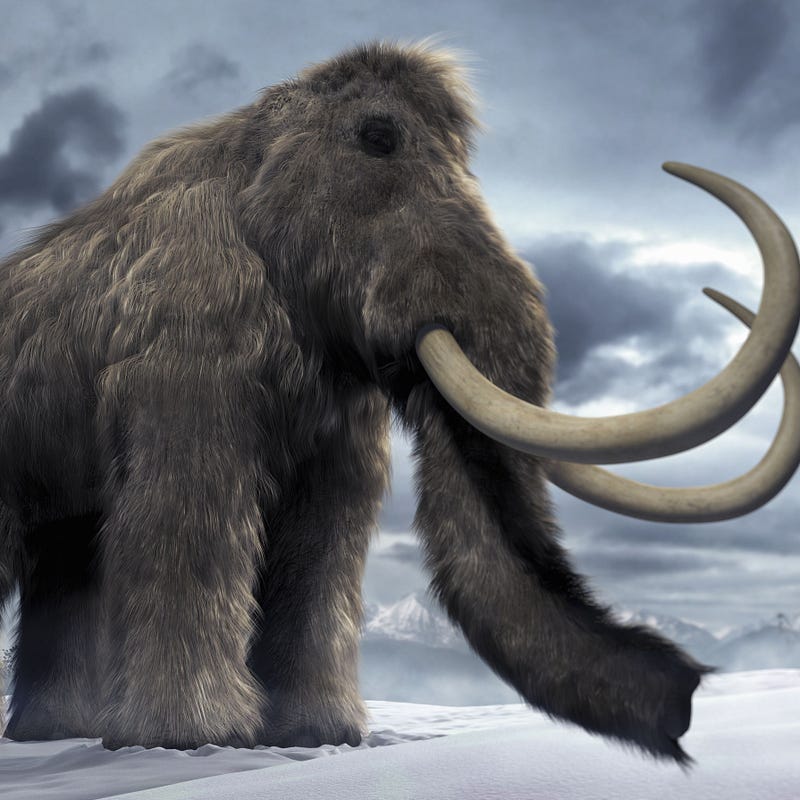Incredible Archeological Discovery Chronicles Journey of Woman and Child
Written on
Chapter 1: The Ancient Footprints
A fascinating narrative has emerged from a remarkable archeological discovery in White Sands National Park, New Mexico. The longest known collection of fossilized footprints, stretching over a mile, has been uncovered, revealing a more complex story than the previously longest set found in Northern Tanzania, which was merely a tenth of a mile long. These New Mexico footprints allow researchers to trace an individual's journey across vast distances, showcasing the determination required to navigate perilous landscapes. The story of early human survival conveyed through these prints is both poetic and inspiring, corroborated by various archeological and scientific findings.
Imagine the scene 13,000 years ago: the atmosphere is heavy with the remnants of a recent storm, and the ground is dotted with pools of water—a life-sustaining lake during certain seasons. This area attracts not only humans but also colossal fauna. The air is thick with the scent of a giant ground sloth, the largest bipedal mammal, casting an imposing shadow on the muddy terrain. Although humans attempt to hunt these sloths for their meat, such endeavors often end in failure due to the sloths' powerful defenses.
But today, hunting is not on the woman's mind. She moves swiftly across the muddy expanse, a two-year-old child balanced on her left hip, creating an uneven pattern in her footprints. The soft, wet ground clings to her feet as she wipes sweat and stray hair from her brow. Her gait is a blend of urgency and a light jog, fueled by the responsibility of ensuring the child's safety on their journey to a destination just over a mile away.

A sudden call from a nearby mammoth startles her, causing her to stumble and the child to emit a soft whimper. The treacherous terrain is fraught with challenges, including large animals, adverse weather, and an underlying tension driving her forward. After slipping, she occasionally pauses to either adjust the child or encourage it to walk alongside her for a brief moment. The little one finds delight in the sensation of mud beneath its feet, sucking its fingers as they navigate this wild landscape.
As they traverse the terrain, a Colombian mammoth ambles by, seemingly indifferent to their presence. Its massive footprints intersect with those of the woman and child. Conversely, the ground sloth reacts warily, standing on its hind legs to investigate the unfamiliar scent before hastily retreating. Saber-tooth cats, too, roam this area, aware of the duo’s presence.
Ultimately, the pair arrives at their destination, where a hunting party awaits under shelter from the rain, embers glowing in the evening air. The woman rests with them for several hours, regaining her strength after the taxing journey while remaining conscious of the need to return home before nightfall. Her gaze drifts toward the distant cliffs, beautiful yet fraught with potential dangers from snakes and predatory cats. The journey back home will require the same vigilance as the trip to the hunting party.
Fortunately, the return leg is easier; the ground has dried somewhat, and the child remains behind. Alone, the woman is grateful to be unburdened yet finds herself missing the child's companionship. She maintains her brisk pace, this time without any slips. Her footsteps are steady and purposeful as she heads into the encroaching darkness.

Discovered in 2017 near a lake's surface, these tracks were hidden beneath layers of debris for over 10,000 years, awaiting the right conditions for their revelation. Researchers believe there may be more footprints leading into the wilderness, but access is restricted due to a nearby military range.
While the narrative above is rooted in archeological evidence, it embraces a bit of creative interpretation. The facts indicate that an individual, possibly an adolescent male or a woman, made the hurried journey alongside a child, navigating a landscape inhabited by formidable creatures, including startled ground sloths and Colombian mammoths. Their path was fraught with slippery mud, leading to occasional falls. The return trip was slower and more forgiving, undertaken solo by the older individual.
The motivations behind this journey, the urgency of their travel, and the absence of the child on the return remain shrouded in mystery. However, it is clear that this was no ordinary trek; it represented a daunting yet exhilarating exploration through a perilous environment, reflecting the primitive defenses early humans had against the untamed world around them.